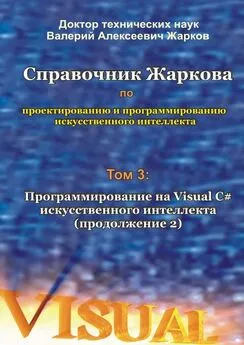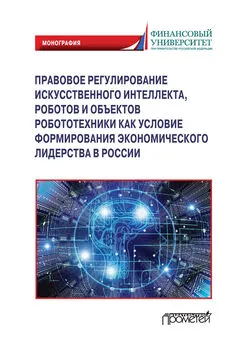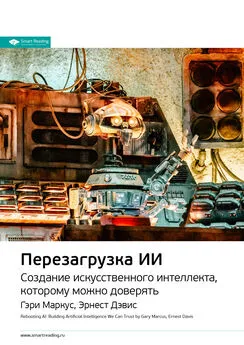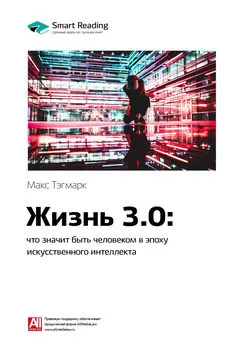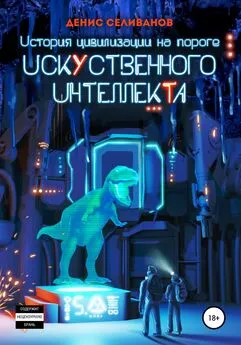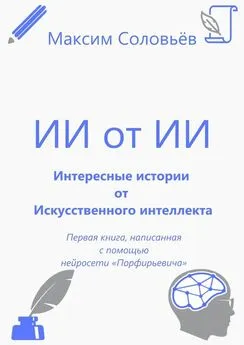Тревор Кокс - Зачем мы говорим. История речи от неандертальцев до искусственного интеллекта
- Название:Зачем мы говорим. История речи от неандертальцев до искусственного интеллекта
- Автор:
- Жанр:
- Издательство:КоЛибри, Азбука-Аттикус
- Год:2020
- Город:М.
- ISBN:978-5-389-17812-0
- Рейтинг:
- Избранное:Добавить в избранное
-
Отзывы:
-
Ваша оценка:
Тревор Кокс - Зачем мы говорим. История речи от неандертальцев до искусственного интеллекта краткое содержание
Зачем мы говорим. История речи от неандертальцев до искусственного интеллекта - читать онлайн бесплатно ознакомительный отрывок
Интервал:
Закладка:
347
Ten Brinke L., Stimson D., Carney D. R . Some evidence for unconscious lie detection // Psychological Science. 2014. P. 0956797614524421.
348
С этим методом мы познакомились ранее, когда рассматривали голосовые предрассудки.
349
Lie detectors ‹cut car claims› // BBC News. 2003. http://news.bbc.co.uk/1/hi/uk/3227849.stm.
350
Heingartner D . It’s the Way You Say It, Truth Be Told // New York Times. 2004. http://www.nytimes.com/2004/07/01/technology/it-s-the-way-you-say-it-truth-be-told.html.
351
Lacerda F. LVA technology: The illusion of lie detection // FONETIK. 2009. June.
352
Kreiman J., Sidtis D . Foundations of voice studies: An interdisciplinary approach to voice production and perception. P. 369.
353
Eriksson A., Lacerda F. Charlatanry in forensic speech science: A problem to be taken seriously // International Journal of Speech, Language and the Law. 2007. Vol. 14 (2). P. 169–193.
354
Defamation Act 2013 aims to improve libel laws // BBC News. 2013. http://www.bbc.co.uk/news/uk-25551640.
355
Damphousse K. R., Pointon L., Upchurch D., Moore R. K . Assessing the validity of voice stress analysis tools in a jail setting. 2007. Этот доклад был представлен в Министерстве юстиции США.
356
Когда арестанты думали, что их речь анализируют, 14 % солгали, сказав, что не употребляют наркотики. Однако когда они не знали, что их речь подвергается анализу на наличие стресса в голосе, солгали 40 %. См.: Damphousse K. R., Pointon L., Upchurch D., Moore R. K . Assessing the validity of voice stress analysis tools in a jail setting.
357
Jones E. E., Sigall H . The bogus pipeline: a new paradigm for measuring affect and attitude // Psychological Bulletin. 1971. Vol. 76 (5). P. 349.
358
Arthur C . Government data shows £ 2.4m «lie detection» didn’t work in 4 of 7 trials. http://www.ministryoftruth.me.uk/2012/02/08/nemesyscos-lva-technology-ghosts-in-the-noise/#disqus_thread.
359
Ekman P . Telling Lies: Clues to Deceit in the Marketplace, Politics, and Marriage (revised edition). WW Norton & Company, 2009.
360
Exxon Valdez creates oil slick disaster // BBC News. http://news.bbc.co.uk/onthisday/hi/dates/stories/march/24/newsid_4231000/4231971.stm.
361
Schuller B., Batliner A., Steidl S. et al . The Interspeech 2011 speaker state challenge // Interspeech. 2011. January. P. 3201–3204.
362
Bone D., Black M., Li M. et al . Intoxicated Speech Detection by Fusion of Speaker Normalized Hierarchical Features and GMM Supervectors // Interspeech. 2011. August. P. 3217–3220.
363
Показатель успешности составляет 74 %, если сравниваются два образца, записанные одним человеком (в трезвом состоянии и в состоянии опьянения). Если представлен только один образец и сравнение невозможно, показатель успешности снижается до 65 %. См.: Pisoni D. B., Martin C. S . Effects of Alcohol on the Acoustic-Phonetic Properties of Speech: Perceptual and Acoustic Analyses // Alcoholism: Clinical and Experimental Research. 1989. Vol. 13 (4). P. 577–587.
364
Эмоции, стресс и усталость также могли оказать влияние. См.: Kreiman J., Sidtis D . Foundations of voice studies: An interdisciplinary approach to voice production and perception. P. 360.
365
Oberlader V. A., Naefgen C., Koppehele-Gossel J . Validity of content-based techniques to distinguish true and fabricated statements: A meta-analysis // Law and Human Behavior. 2016. Vol. 40 (4). P. 440.
366
Jim Flanagan et al. Techniques for expanding the capabilities of practical speech recognizers // Trends in Speech Recognition. 1980. Больше об Одри см.: Davis K. H., Biddulph R., Balashek S . Automatic recognition of spoken digits // Journal of the Acoustical Society of America. 1952. Vol. 24 (6). P. 637–642.
367
Say what? iPhone has problems with Scots accents // BBC. 2011. http://www.bbc.co.uk/news/uk-scotland-15475989.
368
Caliskan A., Bryson J. J., Narayanan A . Semantics derived automatically from language corpora contain human-like biases // Science. 2017. Vol. 356 (6334). P. 183–186.
369
Этот пример взят из: Biased bots: Human prejudices sneak into artificial intelligence systems // Science News. 2017. https://www.sciencedaily.com/releases/2017/04/170413141055.htm.
370
Dahl G. E., Yu D., Deng L., Acero A . Context-dependent pre-trained deep neural networks for large-vocabulary speech recognition // Audio, Speech, and Language Processing. 2012. IEEE Transactions. Vol. 20 (1). P. 30–42.
371
Rayner K., White S. J., Johnson R. L., Liversedge S. P . Raeding Wrods With Jubmled Lettres There Is a Cost // Psychological science. 2006. Vol. 17 (3). P. 192–193.
372
В 2011 году голосовой поиск Google натренировали на 240 миллиардов слов, загруженных от миллионов пользователей. См.: Speech Recognition Lightning Talk — Google and AAAI 2011. https://www.youtube.com/watch?v=g6iAOdRsDOM.
373
Dong X. L. et al . Knowledge-Based Trust: Estimating the Trustworthiness of Web Sources // IEEE Data Eng. Bulletin. 2016. Vol. 39 (2). P. 106–117.
374
Chilton M . The best spoonerisms // Telegraph. 2015.
375
Kiddon C., Brun Y . That’s what she said: double entendre identification // Proceedings of the 49th Annual Meeting of the Association for Computational Linguistics: Human Language Technologies. 2011. Vol. 2. P. 89–94.
376
Scott S. K., Lavan N., Chen S., McGettigan C . The social life of laughter // Trends in Cognitive Sciences. 2014. Vol. 18 (12). P. 618–620.
377
Непроизвольный смех в целом длится дольше, сопровождается короткими вспышками хохота, его тон выше, в нем больше невокализованных сегментов, он имеет более низкую среднюю интенсивность, чем нарочитый смех. Такой смех назализован. См.: Lavan N., Scott S. K., McGettigan C . Laugh like you mean it: Authenticity modulates acoustic, physiological and perceptual properties of laughter // Journal of Nonverbal Behavior. 2016. Vol. 40 (2). P. 133–149.
378
Карр рассказывает замечательный анекдот о том, как он смотрел выступление своего коллеги Ника Хелма: «…Oн разыгрывал интермедию, которая мне показалась ужасно смешной, и я смеялся до упаду. Ник просто остановил выступление и сказал: “Знаешь, Джимми, я ведь не смеюсь, когда прихожу на твои выступления”». http://www.digitalspy.com/tv/news/a788818/jimmy-carr-compares-laugh-weird-honking-goose-while-talking-new-netflix-show/.
379
Плач столь же необычен и также усиливает активность в слуховой зоне коры головного мозга, см.: Arnal L. H. et al . Human screams occupy a privileged niche in the communication soundscape // Current Biology. 2015. Vol. 25 (15). P. 2051–2056.
380
Truong K. P., Van Leeuwen D. A . Automatic discrimination between laughter and speech // Speech Communication. 2007. Vol. 49 (2). P. 144–158.
381
Цит. по: Lynn J., Jay A . The Complete Yes Minister: The Diaries of a Cabinet Minister, by the Right Hon. James Hacker MP. BBC Books, 1984.
382
BBC World Service. The Why Factor, «The Lie».
383
McNally L., Jackson A. L . Cooperation creates selection for tactical deception // Proceedings of the Royal Society B. 2013, July. Vol. 280 (1762). P. 20130699. The Royal Society.
384
Слова Барака Туровски, главы управления производством и пользовательскими запросами в Google Translate. https://www.theguardian.com/technology/2016/jun/04/man-v-machine-robots-artificial-intelligence-cook-write.
385
Campbell-Kelly M . Programming the Mark I: Early programming activity at the University of Manchester // Annals of the History of Computing. 1980. Vol. 2 (2). P. 130–168.
386
There must be an Angel. On the Beginnings of Arithmetics of Rays // Transmediale. https://transmediale.de/content/there-must-be-an-angel-on-the-beginnings-of-arithmetics-of-rays.
387
Poetry and computational creativity // James Robert Lloyd. 2015. http://jamesrobertlloyd.com/blog-2016–04–18-poetry-net.
388
Эта идея была мысленным экспериментом Тьюринга, а не конкретным планом теста. См.: Turing A. M . Computing machinery and intelligence // Mind. 1950. Vol. 59 (236). P. 433–460.
389
Jefferson G . The Mind of Mechanical Man // British Medical Journal. 1949. Vol. 1 (4616). P. 1105–1110.
390
Misztal-Radecka J., Indurkhya B . A blackboard system for generating poetry // Computer Science. 2016. Vol. 17 (2). P. 265.
391
Depression Part Two // Hyperbole and a half. http://hyperboleandahalf.blogspot.co.uk/2013/05/depression-part-two.html.
392
Steinbeis N., Koelsch S . Understanding the intentions behind man-made products elicits neural activity in areas dedicated to mental state attribution // Cerebral Cortex. 2009. Vol. 19 (3). P. 619–623. Еще одно исследование в этой области показало, что музыка оценивалась ниже, если людям говорили, что она написана компьютером. Неудивительно, что такое предубеждение относительно компьютерных сочинений в наибольшей степени свойственно музыкантам. См.: Moffat D. C., Kelly M . An investigation into people’s bias against computational creativity in music composition // Proceedings of the 3rd International Joint Workshop on Computational Creativity. ECAI06 Workshop, Riva del Garda, Italy. 2006.
Читать дальшеИнтервал:
Закладка:

